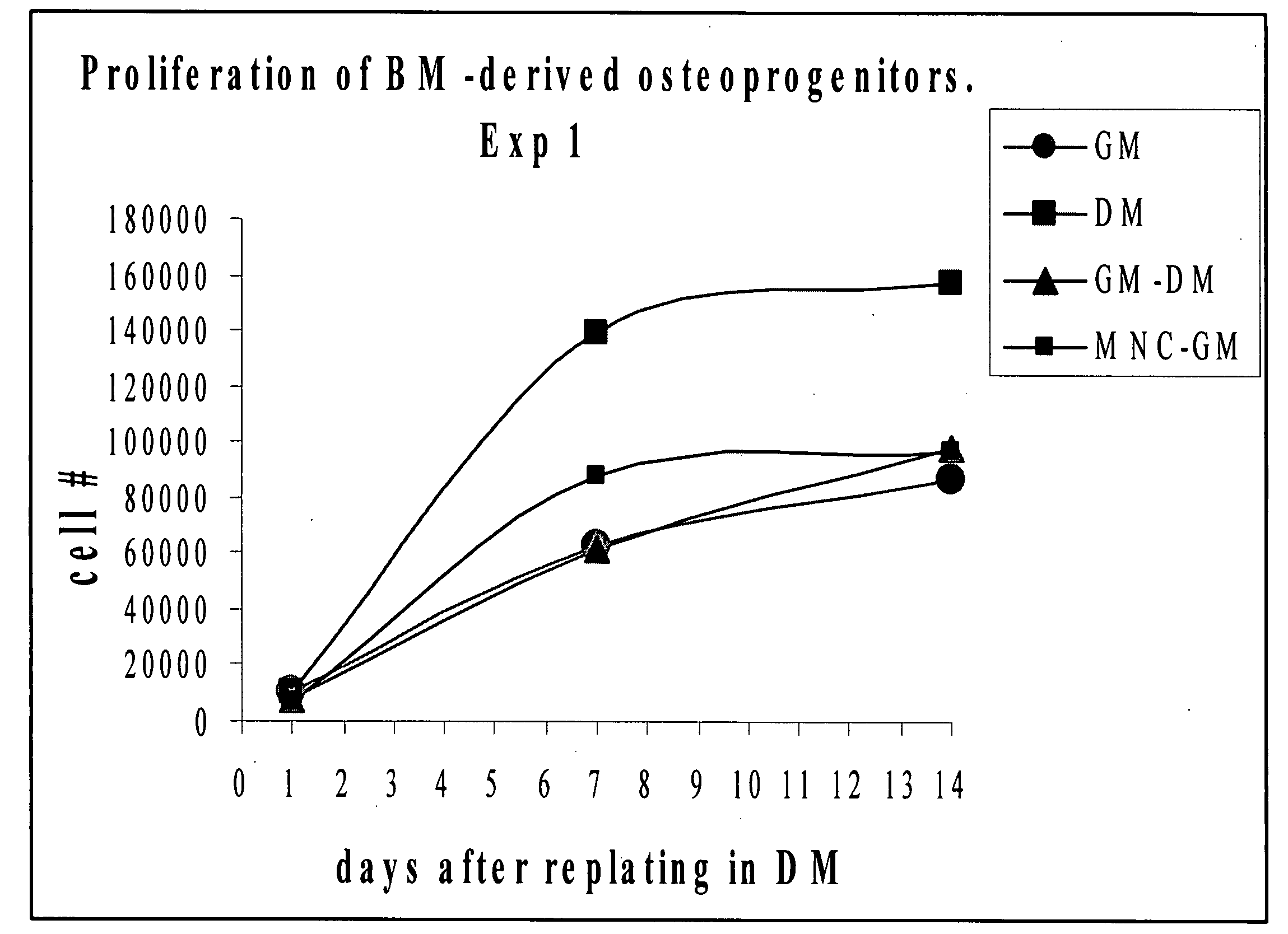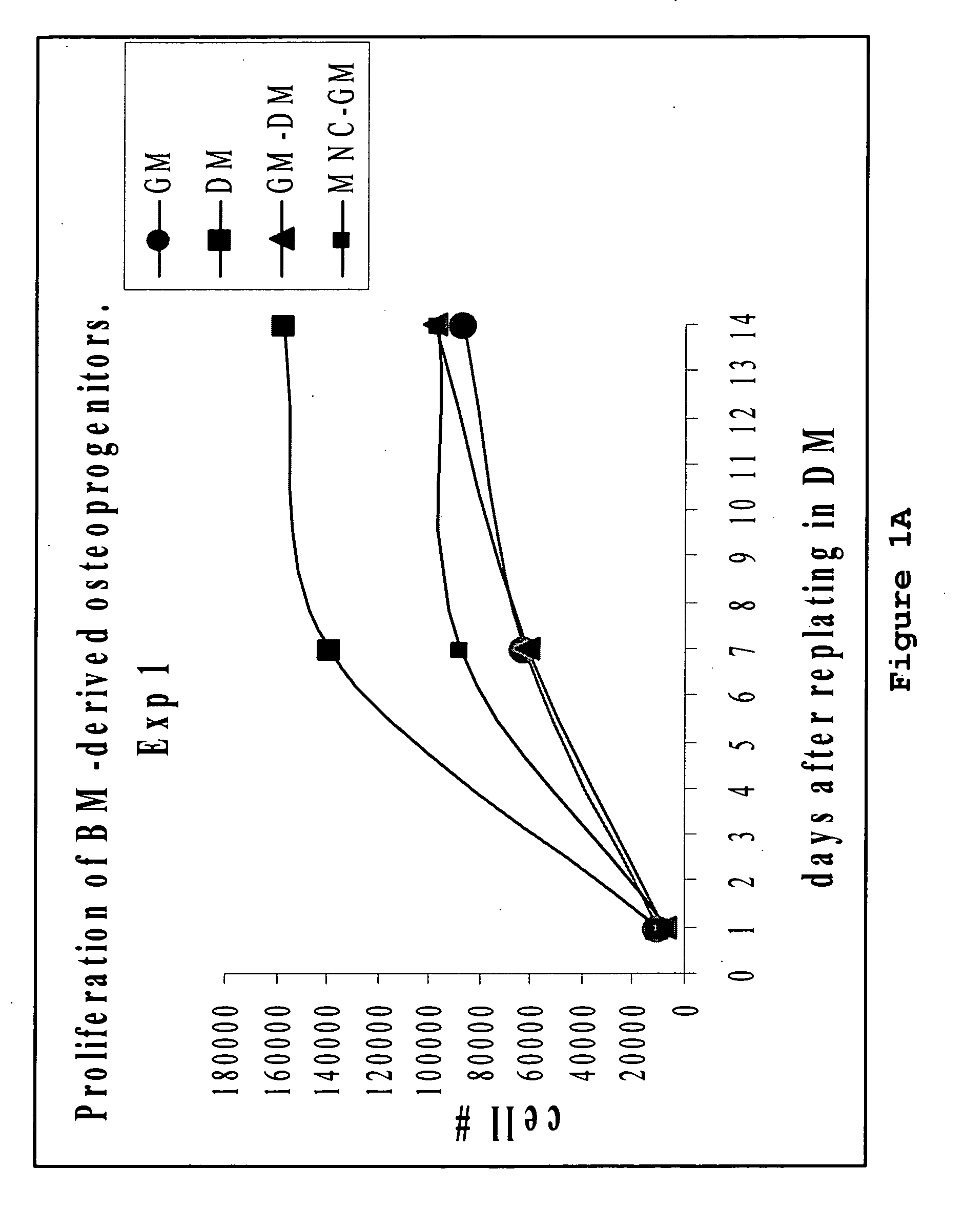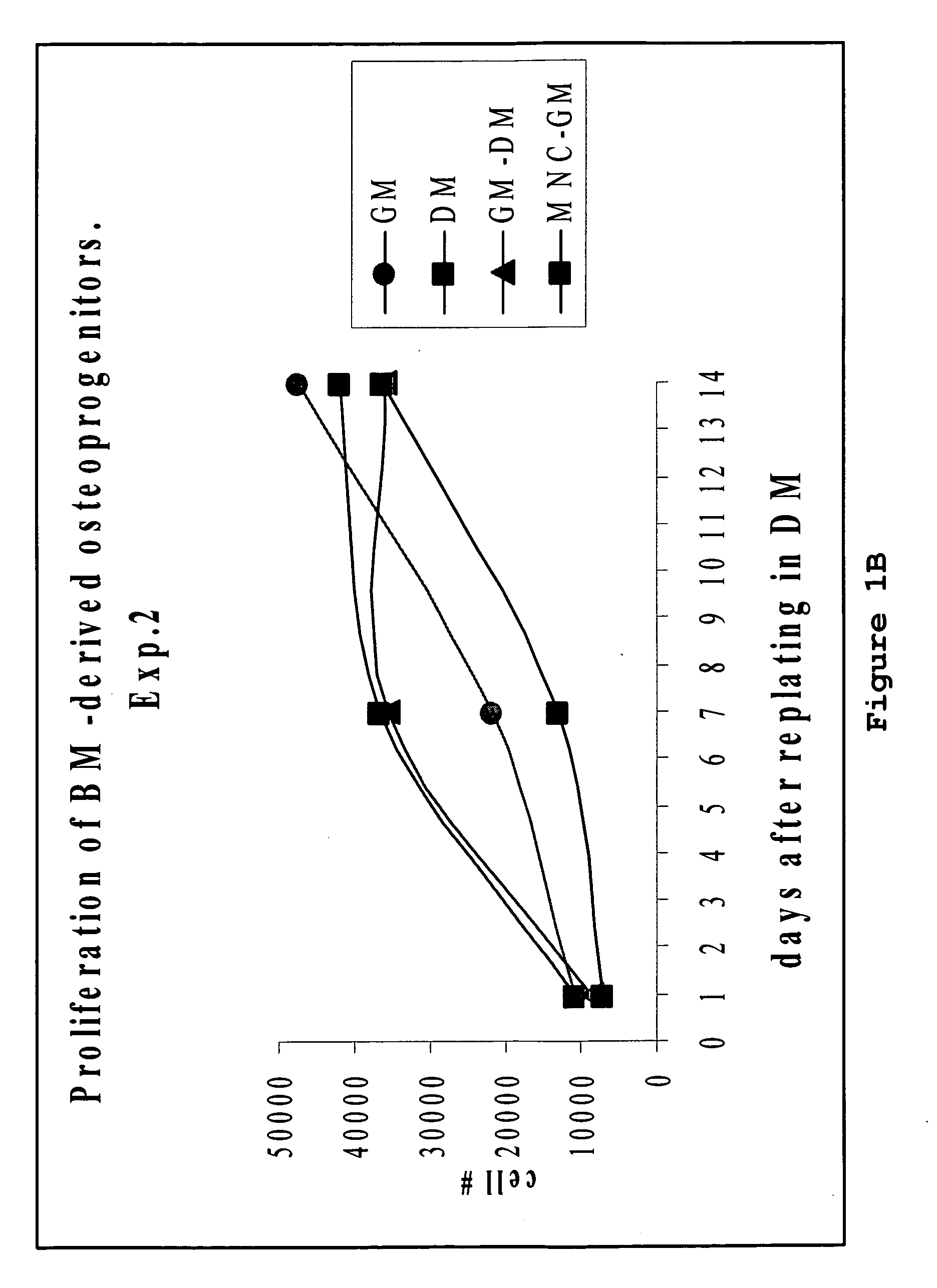Method of generation and expansion of tissue-progenitor cells and mature tissue cells from intact bone marrow or intact umbilical cord tissue
a technology of mature tissue cells and tissue progenitor cells, which is applied in the direction biocide, drug compositions, etc., can solve the problems of affecting the regeneration effect affecting the survival rate of skeletal/connective tissue cells, and no common isolation method is capable of yielding, etc., to achieve the effect of compromising the benefit of mscs infusion and limited regeneration
- Summary
- Abstract
- Description
- Claims
- Application Information
AI Technical Summary
Benefits of technology
Problems solved by technology
Method used
Image
Examples
example 1
Cell Culture
[0098]Cell culture dishes (6 cm, NUNC) were pre-coated with 10 μg / ml fibronectin (Biological Industries, Israel cat.# 03-090-1) for 2 hours at room temperature, washed twice with PBS and filled up with 5 ml osteogenic differentiation medium pre-warmed at 37° C. [α-MEM / 10% FCS / 10 mM glycerophosphate / 0.2 mM L-ascorbic acid 2-phosphate (Mg salt n-hydrated) / 10 nM dexamethasone (added freshly at each feeding) / 100 units / ml penicillin / 0.1 mg / ml streptomycin 0.25 mg / ml amphotericin B]. Then, 1 ml of the WBM was added to the plate (usually corresponds to 20−50×106 bone marrow cells; cell number varies from donor to donor). The culture remained in the incubator for 2 weeks at 37° C., 100% humidity and 5% CO2. After one week, half of the medium was replaced with fresh medium without disturbing the cells.
[0099]Three variations of this protocol were performed simultaneously:[0100]1. 1 ml bone marrow (containing about 20-50×105 bone marrow cells) was plated into commercial mesenchymal...
example 2
Measurement of Alkaline Phosphatase (ALP) Activity
[0109]Cells were washed twice with PBS and then lysed with 250 μl / well cold lysis buffer [1 mM MgCl2 / 0.5% Triton XI00 in Alkaline Buffer Solution (Sigma cat# A9226) and incubated on ice for 1 hour. The reaction mixture of 100 μl cell lysate and 400 μl Phosphatase Substrate Solution (20 mg / ml of p-nitrophenol phosphate (Sigma Cat # N4645) in 5 ml Alkaline Buffer Solution diluted 1:3 with ddH2O) was incubated at 37° C. for 10 minutes and then returned on ice. The reaction was stopped with 500 μl EDTA-NaOH stop solution (20 g NaOH plus 37.22 g Na2EDTA in 500 ml ddH2O). 200 μl of each sample were transferred to a 96 well plate and absorbance was read at 404 nm using Synergy plate reader. The results were expressed as nmol p-NP / ml / min and normalized to the number of living cells in corresponding wells.
[0110]ALP activity in osteoprogenitors obtained from intact bone marrow.
[0111]To assess differentiation, BP obtained from the intact bone m...
example 3
[0112]Above mentioned cells grown in 24 well plates with DM were washed twice with PBS and then lysed with 250 μl / well 0.5N HCl. The lysates were shaken at 4° C. overnight to extract calcium and then centrifuged at 1000 rpm for 3 minutes. The assay was set up in 96 well plates using Calcium Liquicolor kit from Stanbio Labs, USA (cat# 0150) according to the manufacturer's instructions. The reaction mixture was incubated for 60 minutes at 37° C. and then absorbance was measured at 550 nm using a Synergy plate reader.
[0113]Calcium Deposition in Cultures of BP Obtained from Intact Bone Marrow.
[0114]More mature osteoblast progenitors usually lay down extracellular matrix and initiate mineralization by depositing extracellular calcium phosphate. In our experiment, calcium deposition was measured in cultures of BP and MSC at 2 weeks after re-plating onto 24 well plates in differentiating medium as described above. Again, BP produced by incubation of the intact bone ...
PUM
| Property | Measurement | Unit |
|---|---|---|
| temperature | aaaaa | aaaaa |
| humidity | aaaaa | aaaaa |
| humidity | aaaaa | aaaaa |
Abstract
Description
Claims
Application Information
 Login to View More
Login to View More - R&D
- Intellectual Property
- Life Sciences
- Materials
- Tech Scout
- Unparalleled Data Quality
- Higher Quality Content
- 60% Fewer Hallucinations
Browse by: Latest US Patents, China's latest patents, Technical Efficacy Thesaurus, Application Domain, Technology Topic, Popular Technical Reports.
© 2025 PatSnap. All rights reserved.Legal|Privacy policy|Modern Slavery Act Transparency Statement|Sitemap|About US| Contact US: help@patsnap.com



